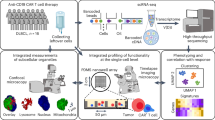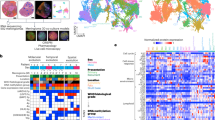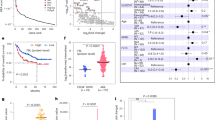Abstract
Many reports have documented apoptotic death in different cell types within hours of exposure to cytotoxic drugs; lower drug concentrations may cause cell cycle arrest at G2/M and subsequent death, which has been distinguished from 'classic' apoptosis. We have analysed etoposide-induced cell death in two lymphoblastoid T-cell lines, CCRF-CEM and MOLT-4, specifically in relation to DNA cleavage as indicated by pulse-field gel and conventional electrophoresis. High (5 microM) concentration etoposide causes 50-kb cleavage of DNA that occurs at the same time as apoptotic morphology and internucleosomal cleavage. At lower concentrations (0.5-0.05 microM), sequential change may be discerned with altered gene expression being similar to that at high dose, but preceding cell cycle arrest and 50-kb cleavage. These last changes, in turn, clearly precede internucleosomal fragmentation of DNA, vital dye staining and morphological evidence cell death. The pattern of higher order fragmentation constitutes a sensitive indicator of commitment to cell death in these cells. Morphological evidence of cell death is associated with internucleosomal fragmentation in one of the lines, but the pattern of 50-kb DNA cleavage provides the clearest evidence of commonality in death processes occurring at low and high drug concentration.
This is a preview of subscription content, access via your institution
Access options
Subscribe to this journal
Receive 24 print issues and online access
$259.00 per year
only $10.79 per issue
Buy this article
- Purchase on Springer Link
- Instant access to full article PDF
Prices may be subject to local taxes which are calculated during checkout
Similar content being viewed by others
Author information
Authors and Affiliations
Rights and permissions
About this article
Cite this article
Sleiman, R., Catchpoole, D. & Stewart, B. Drug-induced death of leukaemic cells after G2/M arrest: higher order DNA fragmentation as an indicator of mechanism. Br J Cancer 77, 40–50 (1998). https://doi.org/10.1038/bjc.1998.7
Issue Date:
DOI: https://doi.org/10.1038/bjc.1998.7
This article is cited by
-
Induction of G2/M phase arrest and apoptosis by a novel enediyne derivative, THDA, in chronic myeloid leukemia (K562) cells
Molecular and Cellular Biochemistry (2006)
-
Flexible Low-Intensity Combination Chemotherapy for Elderly Patients with Acute Myeloid Leukemia
International Journal of Hematology (2002)
-
Morphological and molecular evidence of differentiation during etoposide-induced apoptosis in human lymphoblastoid cells
Cell Death & Differentiation (2000)



